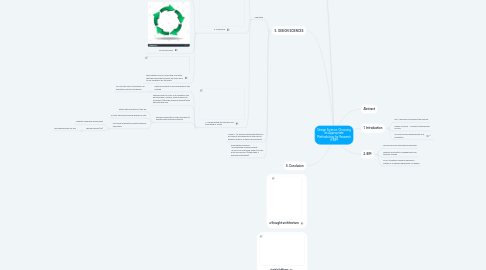
1. Abstract
2. 1. Introduction
2.1. BIM...new way of thinking /new culture
2.2. Design Science …. relevant methodology for BIM
2.3. cyclical process development and evaluation
3. 2. BIM
3.1. revolves around innovative technology
3.2. requires information management and process change
3.3. a non-traditional research approach rooted in an applied philosophy is needed
4. 3. Research Philosophy
5. 4. RELEVANCE OF ACADEMIC RESEARCH IN PRACTICE
5.1. Mode 1 research...traditional... produced at universities...not practical
5.2. Mode 2 research... produced at companies. laboratories... practical... produces knowledge as it works in practice
6. 5. DESIGN SCIENCES
6.1. Approach
6.1.1. a. Diagnosing the problem
6.1.1.1. springboard: “something is not quite right with the world and it has to be changed”.
6.1.1.2. investigate and determine the nature and prevalence of the problem
6.1.1.2.1. self-interpretation through reflection or an initial literature review
6.1.2. b. Proposing
6.1.2.1. develop the ‘technological rule’ (artifact) which will address the practical problem
6.1.2.2. cyclical process
6.1.2.3. speculative process, proposing a solution that the researcher believes will work prior to any validation by the users
6.1.3. c. Implementing the solution and evaluating in action
6.1.3.1. determined what is accomplished by the change
6.1.3.1.1. to carry this out a mechanism for evaluation must be proposed
6.1.3.2. methods used to carry out evaluation can be interviews, surveys, case studies and simulation (through empirical testing) with the intended user
6.1.3.3. emperical evaluation is the best way to evaluted the proposed artificat
6.1.3.3.1. either with simulation in the lab
6.1.3.3.2. or after the artifact being applied on site
6.1.3.3.3. not much publications about empirical evaluation

